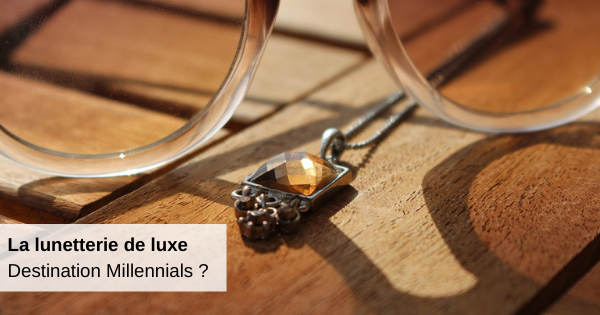Luxury eyewear: a destination for Millennials?

For a long time, luxury was part of the inaccessible. This is still the case in many sectors. In the optical sector , however, the adaptation has been dazzling, because demand has adjusted. The arrival on the job market of millennials , in French millennials, people born between the early 80s and the late 90s, has completely changed the game for luxury eyewear.
Luxury eyewear: for and by millennials?
We sometimes have the impression that the trends change according to the direction of the wind, that the fashions change and return a few decades later. Luxury does not necessarily have this cyclical side. If the big houses know how to adapt to demand, they still want to keep the identity that made their strength, the one that often a single woman or a single man took a lifetime to create. When fashion accessories thrive, eyewear is no exception and is an integral part of the luxury offering.
When millennials find themselves in the workforce, their values – in terms of consumption – are light years away from those of their parents. Thus, eyewear does not escape. He is ready to fall for brands once considered to be reserved for another standard of living. However, it is not only demand that adapts, because the millennial is not fooled.

Yes, the consumer believes that he has the right to the "best." But not at any cost. So it's up to the offer this time to adapt. Brands need to communicate differently from "baby boomers." Even more so because new information and communication technologies are appearing, and the Millennial has mastered them wonderfully.
Thus, brands must harness themselves to tell the right story. Storytelling is essential, and the consumer must be pampered. The optical sector must reinvent itself. Unlike bags or shoes – for example Louis Vuitton or Louboutin – which you don't necessarily have to be familiar with to recognize the signature as it is so striking, glasses play in another category . They must represent the personality – sometimes complex – of the wearer.
A strategy that adapts and differs from one creator to another
In 2017, millennials represented 85% of the growth in the luxury goods market . The advent of social networks, which they are the first to have "shaped" before Generation Z takes over, has forced the rapprochement between brands and consumers. This is something new for the luxury industry !
Optical frames and sunglasses are the best-selling luxury products today. And then, luxury had the ability to subcontract its production to specialists. So at one time, most of the big luxury houses will stop making their frames themselves. And this strategy of sealing licensing agreements with other companies for manufacturing is no longer necessarily in fashion.
Luxury, facing the demand, and also to the unforeseen events of the market, to the successive crises, gradually regained control of their production. The Thelios brand, a subsidiary born from the alliance between Marcolin and LVMH, is the perfect example. The avowed goal is therefore to internalize production , in order to control the entire chain.
[Embed] https://www.youtube.com/ watch? v = dBUQh2McFdA & ab_channel = ChristianDior [/ embed]
Of course, this point is not yet an immutable truth, but a strategy which tends to be to confirm. Distributors like Kering Eyewear have made luxury their specialty. Other designers, like Luca de Staël , still master their entire commercial chain.
Anyway, luxury houses have found their target , and there is no doubt that the upcoming arrival of Generation Z on the job market should encourage them to do the same!


